
STS-71 Biographies
| Gibson | Precourt
| Baker | Dunbar | Harbaugh
|
| Solovyev | Budarin |
Thagard | Dezhurov | Strekalov
|
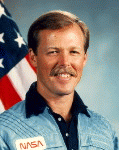 Robert
L. Gibson, Commander
Robert
L. Gibson, Commander
NAME: Robert L. Gibson (Captain, USN) NASA Astronaut (former)
BIRTHPLACE AND DATE: Born October 30, 1946, in Cooperstown, New York, but considers Lakewood, California, to be his hometown. Married to Dr. M. Rhea Seddon of Murfreesboro, Tennessee. Four children. He enjoys home built aircraft, formula one air racing, running and surfing during his free time. His mother, Mrs. Paul A. Gibson, resides in Seal Beach, California. His father is deceased. Her father, Mr. Edward C. Seddon, resides in Murfreesboro; her mother is deceased.
EDUCATION: Graduated from Huntington High School, Huntington, New York, in 1964; received an associate degree in engineering science from Suffolk County Community College in 1966, and a bachelor of science degree in aeronautical engineering from California Polytechnic State University in 1969.
SPECIAL HONORS: Awarded the Federation Aeronautique Internationale (FAI) "Louis Bleriot Medal" (1992), and the Experimental Aircraft Association (EAA) "Freedom of Flight" Award (1989). Established world records for "Altitude in Horizontal Flight," Airplane Class C1A in 1991, and "Time to Climb to 9000 Meters" in 1994. Military awards include: the Defense Superior Service Medal; the Distinguished Flying Cross; 3 Air Medals; the Navy Commendation Medal with Combat "V"; a Navy Unit Commendation; Meritorious Unit Commendation; Armed Forces Expeditionary Medal; Humanitarian Service Medal; and Vietnam Campaign Medal.
EXPERIENCE: Gibson entered active duty with the Navy in 1969. He received primary and basic flight training at Naval Air Stations Saufley Field and Pensacola, Florida, and Meridian, Mississippi, and completed advanced flight training at the Naval Air Station at Kingsville, Texas.
While assigned to Fighter Squadrons 111 and 1, during the period April 1972 to September 1975, he saw duty aboard the USS Coral Sea (CVA-43) and the USS Enterprise (CVAN-65) -- flying combat missions in Southeast Asia. He is a graduate of the Naval Fighter Weapons School, "Topgun." Gibson returned to the United States and an assignment as an F-14A instructor pilot with Fighter Squadron 124. He graduated from the U.S. Naval Test Pilot School, Patuxent River, Maryland, in June 1977, and later became involved in the test and evaluation of F-14A aircraft while assigned to the Naval Air Test Center's Strike Aircraft Test Directorate.
His flight experience includes over 6,000 hours in over 50 types of civil and military aircraft. He holds airline transport pilot, multi-engine, and instrument ratings, and has held a private pilot rating since age 17. Gibson has also completed over 300 carrier landings.
NASA EXPERIENCE: Selected by NASA in January 1978, Gibson became an astronaut in August 1979. Gibson has flown five missions: STS 41-B in 1984, STS 61-C in 1986, STS-27 in 1988, STS-47 in 1992, and STS-71 in 1995. Gibson served as Chief of the Astronaut Office (December 1992 to September 1994) and as Deputy Director, Flight Crew Operations (March-November 1996).
On his first space flight Gibson was the pilot on the crew of STS 41-B which launched from the Kennedy Space Center, Florida, on February 3, 1984. The flight accomplished the proper Shuttle deployment of two Hughes 376 communications satellites which failed to reach desired geosynchronous orbits due to upper stage rocket failures. Rendezvous sensors and computer programs were flight tested for the first time. The STS 41-B mission marked the first checkout of the Manned Maneuvering Unit (MMU),and Manipulator Foot Restraint (MFR), with Bruce McCandless and Bob Stewart performing two spectacular EVA's (space walks). The German Shuttle Pallet Satellite (SPAS), Remote Manipulator System (RMS), six "Getaway Specials," and materials processing experiments were included on the mission. The eight-day orbital flight of Challenger culminated in the first landing on the runway at the Kennedy Space Center on February 11, 1984, and Gibson logged 191 hours in space.
Gibson was the spacecraft commander of the STS 61-C mission. The seven-man crew onboard the Orbiter Columbia launched from the Kennedy Space Center, Florida, on January 12, 1986. During the six-day flight the crew deployed the SATCOM KU satellite and conducted experiments in astrophysics and materials processing. The mission concluded with a successful night landing at Edwards Air Force Base, California, on January 18, 1986, and logged him an additional 146 hours in space.
Gibson subsequently participated in the investigation of the Space Shuttle Challenger accident, and also participated in the redesign and recertification of the solid rocket boosters.
As the spacecraft commander of STS-27, Gibson and his five-man crew launched from the Kennedy Space Center, Florida, on December 2, 1988, aboard the Orbiter Atlantis. The mission carried a Department of Defense payload, and a number of secondary payloads. After 68 orbits of the Earth the mission concluded with a dry lakebed landing on Runway 17 at Edwards Air Force Base, California, on December 6, 1988. Mission duration was 105 hours.
On Gibson's fourth space flight, the 50th Space Shuttle mission, he served as spacecraft commander of STS-47, Spacelab-J, which launched on September 12, 1992 aboard the Orbiter Endeavour. The mission was a cooperative venture between the United States and Japan, and included the first Japanese astronaut as a member of the seven-person crew. During the eight-day flight, the crew focused on life science and materials processing experiments in over forty investigations in the Spacelab laboratory, as well as scientific and engineering tests performed aboard the Orbiter Endeavour. The mission ended with a successful landing on the runway at the Kennedy Space Center in Florida after 126 orbits of the Earth on September 20, 1992.
Most recently, (June 27 to July 7, 1995), Captain Gibson commanded a crew of seven-members (up) and eight-members (down) on Space Shuttle mission STS-71. This was the first Space Shuttle mission to dock with the Russian Space Station Mir, and involved an exchange of crews. The Atlantis Space Shuttle was modified to carry a docking system compatible with the Russian Mir Space Station. It also carried a Spacelab module in the payload bay in which the crew performed various life sciences experiments and data collections. Mission duration was 235 hours, 23 minutes.
In five space flights, Gibson has completed a total of 36-1/2 days in space.
_______________________________________________________________
| Gibson | Precourt
| Baker | Dunbar | Harbaugh
|
| Solovyev | Budarin |
Thagard | Dezhurov | Strekalov
|
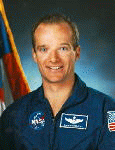 Charles
J. Precourt, Pilot
Charles
J. Precourt, Pilot
NAME: Charles J. Precourt (Colonel, USAF, Ret.) NASA Astronaut
PERSONAL DATA: Born June 29, 1955, in Waltham, Massachusetts, but considers Hudson, Massachusetts, to be his hometown. Married to the former Lynne Denise Mungle of St. Charles, Missouri. They have three daughters, Michelle, Sarah, and Aimee. Precourt enjoys golf and flying light aircraft. He flies a Varieze, an experimental aircraft that he built. His parents, Charles and Helen Precourt, reside in Hudson. Her parents, Loyd and Jerry Mungle, reside in Streetman, Texas.
EDUCATION: Graduated from Hudson High School, Hudson, Massachusetts, in 1973; received a bachelor of science degree in aeronautical engineering from the United States Air Force Academy in 1977, a master of science degree in engineering management from Golden Gate University in 1988, and a master of arts degree in national security affairs and strategic studies from the United States Naval War College in 1990. While at the United States Air Force Academy, Precourt also attended the French Air Force Academy in 1976 as part of an exchange program. Fluent in French and Russian.
ORGANIZATIONS: Vice President of the Association of Space Explorers; member of the Society of Experimental Test Pilots (SETP), and the Experimental Aircraft Association.
SPECIAL HONORS: Military decorations include: the Defense Superior Service Medal (2); the Distinguished Flying Cross; the Air Force Meritorious Service Medal (2). Distinguished graduate of the United States Air Force Academy and the United States Naval War College. In 1978 he was the Air Training Command Trophy Winner as the outstanding graduate of his pilot training class. In 1989 he was recipient of the David B. Barnes Award as the Outstanding Instructor Pilot at the United States Air ForceTest Pilot School. NASA awards include: the NASA Distinguished Service Medal; the Exceptional Service Medal and Outstanding Leadership Medal; and the NASA Space Flight Medal (4).
EXPERIENCE: Precourt graduated from Undergraduate Pilot Training at Reese Air Force Base, Texas, in 1978. Initially he flew as an instructor pilot in the T-37, and later as a maintenance test pilot in the T-37 and T-38 aircraft. From 1982 through 1984, he flew an operational tour in the F-15 Eagle at Bitburg Air Base in Germany.
In 1985 he attended the United States Air Force Test Pilot School at Edwards Air Force Base in California. Upon graduation, Precourt was assigned as a test pilot at Edwards, where he flew the F-15E, F-4, A-7, and A-37 aircraft until mid 1989, when he began studies at the United States Naval War College in Newport, Rhode Island.
Upon graduation from the War College, Precourt joined the astronaut program. His flight experience includes over 7,000 hours in over 60 types of civil and military aircraft. He holds commercial pilot, multi-engine instrument, glider and certified flight instructor ratings. Precourt retired from the Air Force on March 31, 2000.
NASA EXPERIENCE: Precourt is currently the Chief of the Astronaut Corps, responsible for the mission preparation activities of all Space Shuttle and future International Space Station crews and their support personnel.
Selected by NASA in January 1990, Precourt became an astronaut in July 1991. His other technical assignments to date have included: Manager of ascent, entry, and launch abort issues for the Astronaut Office Operations Development Branch; spacecraft communicator (CAPCOM), providing the voice link from the Mission Control Center during launch and entry for several Space Shuttle missions; Director of Operations for NASA at the Gagarin Cosmonaut Training Center in Star City, Russia, from October 1995 to April 1996, with responsibility for the coordination and implementation of mission operations activities in the Moscow region for the joint U.S./Russian Shuttle/Mir program. He also served as Acting Assistant Director (Technical), Johnson Space Center.
A veteran of four space flights, he has logged over 932 hours in space. He served as a mission specialist on STS-55 (April 26 to May 6, 1993), was the pilot on STS-71 (June 27 to July 7, 1995), and was the spacecraft commander on STS-84 (May 15-24, 1997) and STS-91 (June 2-12, 1998), the final scheduled Shuttle-Mir docking mission, concluding the joint U.S./Russian Phase I Program.
_______________________________________________________________
| Gibson | Precourt
| Baker | Dunbar | Harbaugh
|
| Solovyev | Budarin |
Thagard | Dezhurov | Strekalov
|
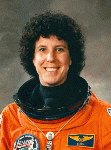 Ellen
S. Baker, Mission Specialist
Ellen
S. Baker, Mission Specialist
NAME: Ellen S. Baker (M.D., M.P.H.) NASA Astronaut
PERSONAL DATA: Born April 27, 1953, in Fayetteville, North Carolina, but considers New York City her hometown. Married to Kenneth J. Baker. They have two daughters. She enjoys swimming, skiing, running, movies, music, and reading Ellen's parents, Dr. & Mrs. Melvin Shulman, reside in Beechhurst, New York. Ken's parents, Mr. & Mrs. James Baker, reside in Columbus, Ohio.
EDUCATION: Graduated from Bayside High School, New York, New York, in 1970; received a bachelor of arts degree in geology from the State University of New York at Buffalo in 1974, a doctorate of medicine degree from Cornell University in 1978, and a masters in public health from University of Texas School of Public Health in 1994.
EXPERIENCE: After completing medical school, Dr. Baker trained in internal medicine at the University of Texas Health Science Center, San Antonio, Texas. In 1981, after three years of training, she was certified by the American Board of Internal Medicine.
NASA EXPERIENCE: In 1981, following her residency, Dr. Baker joined NASA as a medical officer at the Lyndon B. Johnson Space Center. That same year, she graduated from the Air Force Aerospace Medicine Course at Brooks Air Force Base, San Antonio, Texas. Prior to her selection as an astronaut candidate she served as a physician in the Flight Medicine Clinic at the Johnson Space Center.
Selected by NASA in May 1984, Dr. Baker became an astronaut in June 1985. Since then, she has worked a variety of jobs at NASA in support of the Space Shuttle program and Space Station development. A veteran of three space flights, Dr. Baker has logged over 686 hours in space. She was a mission specialist on STS-34 in 1989, STS-50 in 1992, and STS-71 in 1995.
STS-34 Atlantis (October 18-23, 1989) launched from the Kennedy Space Center in Florida, and landed at Edwards Air Force Base in California. During the mission, the crew successfully deployed the Galileo to explore Jupiter, operated the Shuttle Solar Backscatter Ultraviolet Instrument (SSBUV) to map atmospheric ozone, conducted several medical experiments, and numerous scientific experiments. Mission objectives were accomplished in 79 orbits of the Earth, traveling 1.8 million miles in 119 hours and 41 minutes.
STS-50 Columbia (June 25-July 9, 1992) launched and landed at the Kennedy Space Center in Florida. STS-50 was the first flight of the United States Microgravity Laboratory and the first Extended Duration Orbiter flight. Over a two-week period, the crew conducted scientific experiments involving crystal growth, fluid physics, fluid dynamics, biological science, and combustion science. Mission objectives were accomplished in 221 orbits of the Earth, traveling 5.7 million miles in 331 hours 30 seconds and 4 minutes in space.
STS-71 Atlantis (June 27-July 7, 1995) launched from the Kennedy Space Center with a seven-member crew and returned there with an eight-member crew. STS-71 was the first Space Shuttle mission to dock with the Russian Space Station Mir, and involved an exchange of crews. The Atlantis Space Shuttle was modified to carry a docking system compatible with the Russian Mir Space Station. It also carried a Spacelab module in the payload bay in which the crew performed various life sciences experiments and data collections. Mission accomplished in 153 orbits of the Earth, traveling 4.1 million miles in 235 hours and 23 minutes.
_______________________________________________________________
| Gibson | Precourt
| Baker | Dunbar | Harbaugh
|
| Solovyev | Budarin |
Thagard | Dezhurov | Strekalov
|
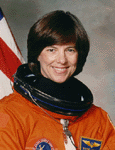 Bonnie
J. Dunbar, Mission Specialist
Bonnie
J. Dunbar, Mission Specialist
NAME: Bonnie J. Dunbar (Ph.D.) NASA Astronaut
PERSONAL DATA: Born March 3, 1949, in Sunnyside, Washington
EDUCATION: Graduated from Sunnyside High School, Sunnyside, Washington, in 1967; received bachelor of science and master of science degrees in ceramic engineering from the University of Washington in 1971 and 1975, respectively; and a doctorate in Mechanical/Biomedical Engineering from the University of Houston, 1983.
ORGANIZATIONS: Member of the American Ceramic Society (ACS), the National Institute of Ceramic Engineers (NICE), Keramos Honorary, the Society of Biomedical Engineering, American Association for the Advancement of Science, Tau Beta Pi, Materials Research Society (MRS); Board of Directors, Arnold Air Society and Angel Flight, International Academy of Astronautics (IAF), Experimental Aircraft Association (EAA), Society of Women Engineers (SWE), Association of Space Explorers (ASE).
SPECIAL HONORS: American Ceramics Society James I. Mueller Award, Cocoa Beach, Florida. (2000). Inducted into the Women in Technology International (WITI) Hall of Fame in 2000, one of five women in the world so honored. Selected as one of the top 20 women in technology in Houston, Texas (2000). NASA Space Flight Medals (1985, 1990, 1992, 1995 and 1998). Superior Accomplishment Award (1997). Member, National Science Foundation (NSF) Engineering Advisory Board, 1993 - present. NASA Exceptional Achievement Medal(1996). NASA Outstanding Leadership Award (1993). Fellow of American Ceramic Society (1993). Design News Engineering Achievement Award (1993). IEEE Judith Resnik Award (1993). Society of Women Engineers Resnik Challenger Medal (1993). Boeing Corporation Pathfinder Award (1992). AAES National Engineering Award (1992). NASA Exceptional Service Award (1991). University of Houston Distinguished Engineering Alumna (1991). M.R.S. Presidents Award (1990). ACS Schwaltzwalder P.A.C.E. Award (1990). University of Washington Engineering Alumni Achievement (1989). NASA Exceptional Service Medal (1988). ACS Life Membership (1986). General Jimmy Doolittle Fellow of the Aerospace Education Foundation (1986). Evergreen Safety Council Public Service in Space Award (1986). American Ceramic Society (ACS) Greaves-Walker Award (1985). Rockwell International Engineer of the Year in 1978. Graduated Cum Laude from the University of Washington in 1975.
EXPERIENCE: Following graduation in 1971, Dr. Dunbar worked for Boeing Computer Services for two years as a systems analyst. From 1973 to 1975, she conducted research for her masters thesis in the field of mechanisms and kinetics of ionic diffusion in sodium beta-alumina.
In 1975, she was invited to participate in research at Harwell Laboratories in Oxford, England, as a visiting scientist. Her work there involved the wetting behavior of liquids on solid substrates. Following her work in England, she accepted a senior research engineer position with Rockwell International Space Division in Downey, California. Her responsibilities there included developing equipment and processes for the manufacture of the Space Shuttle thermal protection system in Palmdale, California. She also represented Rockwell International as a member of the Dr. Kraft Ehricke evaluation committee on prospective space industrialization concepts.
Dr. Dunbar completed her doctorate at the University of Houston in Houston, Texas. Her multi-disciplinary dissertation (materials science and physiology) involved evaluating the effects of simulated space flight on bone strength and fracture toughness. These results were correlated to alterations in hormonal and metabolic activity. Dr. Dunbar has served as an adjunct assistant professor in Mechanical Engineering at the University of Houston.
She is a private pilot with over 200 hours in single engine land aircraft, has logged more than 700 hours flying time in T-38 jets as co-pilot, and has over 100 hours as co-pilot in a Cessna Citation Jet.
NASA EXPERIENCE: Dr. Dunbar accepted a position as a payload officer/flight controller at the Lyndon B. Johnson Space Center in 1978. She served as a guidance and navigation officer/flight controller for the Skylab reentry mission in 1979 and was subsequently designated project officer/payload officer for the integration of several Space Shuttle payloads.
Dr. Dunbar became a NASA astronaut in August 1981. Her technical assignments have included assisting in the verification of Shuttle flight software at the Shuttle Avionics Integration Laboratory (SAIL), serving as a member of the Flight Crew Equipment Control Board, participation as a member of the Astronaut Office Science Support Group, supporting operational development of the remote manipulator system (RMS). She has served as chief of the Mission Development Branch, as the Astronaut Office interface for "secondary" payloads, and as lead for the Science Support Group.
In 1993, Dr. Dunbar served as Deputy Associate Administrator, Office of Life and Microgravity Sciences, NASA Headquarters, Washington, D.C. In February 1994, she traveled to Star City, Russia, where she spent 13-months training as a back-up crew member for a 3-month flight on the Russian Space Station, Mir. In March 1995, she was certified by the Russian Gagarin Cosmonaut Training Center as qualified to fly on long duration Mir Space Station flights.
From October 1995 to November 1996, she was detailed to the NASA JSC Mission Operations Directorate as Assistant Director where she was responsible for chairing the International Space Station Training Readiness Reviews, and facilitating Russian/American operations and training strategies. Currently, Dr. Dunbar serves as Assistant Director to the NASA Johnson Space Center (JSC) with a focus on University Research.
A veteran of five space flights, Dr. Dunbar has logged more than 1,208 hours (50 days) in space. She served as a mission specialist on STS 61-A in 1985, STS-32 in 1990, and STS-71 in 1995, and was the Payload Commander on STS-50 in 1992, and STS-89 in 1998.
STS 61-A Challenger (October 30-November 6, 1985), was the West German D-1 Spacelab mission. It was the first to carry eight crew members, the largest to fly in space, and was also the first in which payload activities were controlled from outside the United States. More than 75 scientific experiments were completed in the areas of physiological sciences, materials science, biology, and navigation. During the flight, Dr. Dunbar was responsible for operating Spacelab and its subsystems and performing a variety of experiments. Her mission training included six months of experiment training in Germany, France, Switzerland, and The Netherlands. STS 61-A launched from the Kennedy Space Center, Florida, and returned to land at Edwards Air Force Base, California. Mission duration was 7 days, 44 minutes 51 seconds, traveling 2.5 million miles in 111 orbits of the Earth.
STS-32 Columbia (January 9-20, 1990), launched from the Kennedy Space Center, Florida, and returned to a night landing at Edwards Air Base in California. During the flight, the crew successfully deployed the Syncom IV-F5 satellite, and retrieved the 21,400-pound Long Duration Exposure Facility (LDEF) using the RMS. They also operated a variety of middeck experiments including the Microgravity Disturbance Experiment (MDE) using the Fluids Experiment Apparatus (FEA), Protein Crystal Growth (PCG), American Flight Echocardiograph (AFE), Latitude/Longitude Locator (L3), Mesoscale Lightning Experiment (MLE), Characterization of Neurospora Circadian Rhythms (CNCR),and the IMAX Camera. Dr. Dunbar was principal investigator for the MDE/FEA Experiment. Additionally, numerous medical test objectives, including in-flight lower body negative pressure (LBNP), in-flight aerobic exercise and muscle performance were conducted to evaluate human adaptation to extended duration missions. Mission duration was 10 days, 21 hours, 01 minute, 38 seconds, traveling 4.5 million miles in 173 orbits of the Earth.
STS-50 Columbia (June 25 to July 9, 1992). Dr. Dunbar was the Payload Commander on STS-50, the United States Microgravity Lab-1 mission which was dedicated to microgravity fluid physics and materials science. Over 30 experiments sponsored by over 100 investigators were housed in the Spacelab in the Shuttles Payload Bay. A payload crew of four operated around-the-clock for 13 days performing experiments in scientific disciplines such as protein crystal growth, electronic and infrared detector crystal growth, surface tension physics, zeolite crystal growth, and human physiology. Mission duration was 13 days, 19 hours, 30 minutes and 4 seconds, traveling 5.7 million miles in 221 orbits of the Earth.
STS-71 Atlantis (June 27 to July 7, 1995), was the first Space Shuttle mission to dock with the Russian Space Station Mir, and involved an exchange of crews. The Atlantis was modified to carry a docking system compatible with the Russian Mir Space Station. Dr. Dunbar served as MS-3 on this flight which also carried a Spacelab module in the payload bay in which the crew performed medical evaluations on the returning Mir crew. These evaluations included ascertaining the effects of weightlessness on the cardio/vascular system, the bone/muscle system, the immune system, and the cardio/pulmonary system. Mission duration was 9 days, 19 hours, 23 minutes and 8 seconds, traveling 4.1 million miles in 153 orbits of the Earth.
STS-89 Endeavour (January 22-31, 1998), was the eighth Shuttle-Mir docking mission during which the crew transferred more than 9,000 pounds of scientific equipment, logistical hardware and water from Space Shuttle Endeavour to Mir. In the fifth and last exchange of a U.S. astronaut, STS-89 delivered Andy Thomas to Mir and returned with David Wolf. Mission duration was 8 days, 19 hours and 47 seconds, traveling 3.6 million miles in 138 orbits of the Earth. Dr. Dunbar was the Payload Commander, responsible for all payload activities including the conduct of 23 technology and science experiments.
_______________________________________________________________
| Gibson | Precourt
| Baker | Dunbar | Harbaugh
|
| Solovyev | Budarin |
Thagard | Dezhurov | Strekalov
|
 Gregory
J. Harbaugh, Mission Specialist
Gregory
J. Harbaugh, Mission Specialist
NAME: Gregory J. Harbaugh, NASA Astronaut
PERSONAL DATA: Born April 15, 1956, in Cleveland, Ohio. Willoughby, Ohio, is his hometown. Married. Three children. Enjoys building his own airplane, golf, flying, basketball, running, and snow skiing.
EDUCATION: Graduated from Willoughby South High School in 1974; received a bachelor of science degree in aeronautical and astronautical engineering from Purdue University in 1978, and a master of science degree in physical science from University of Houston-Clear Lake in 1986.
ORGANIZATIONS: Member, Sigma Chi Fraternity, Omicron Delta Kappa, Sigma Gamma Tau.
SPECIAL HONORS: Recipient of the NASA Distinguished Service Medal, four NASA Space Flight Medals, the NASA Exceptional Service Medal, the NASA Exceptional Achievement Medal, the 1999 Rotary National Award for Space Achievement- "Stellar" Award for Outstanding Leadership, the 1995 American Astronautical Society Flight Achievement Award, the Johns Hopkins University Presidential Medal, the Purdue University Outstanding Aerospace Engineer and Astronaut Alumnus Awards, Aviation Week and Space Technology Laurels for 1991 (STS 39) and 1995 (STS-71), and the Sigma Chi Fraternity Significant Sig Award.
NASA EXPERIENCE: Mr. Harbaugh came to NASA's Johnson Space Center after graduation from Purdue University. Since 1978 he has held engineering and technical management positions in Space Shuttle flight operations. Mr. Harbaugh supported Shuttle flight operations from Mission Control for most of the flights from STS-1 through STS 51-L. He served as Lead Data Processing Systems (DPS) Officer for STS-9 (Spacelab-1) and STS 41-D, Orbit DPS for STS 41-B and STS 41-C, and Ascent/Entry DPS for STS 41-G. Harbaugh also served as a senior flight controller addressing issues requiring real-time resolution, for several flights from STS 51-A through STS 51-L.
Mr. Harbaugh has a commercial pilot's license with instrument rating, and over 1600 hours total flying time.
Selected by NASA in June 1987, Mr. Harbaugh became an astronaut in August 1988. His technical assignments to date have included work in the Shuttle Avionics Integration Laboratory (SAIL), the Shuttle Remote Manipulator System (RMS), telerobotics systems development for Space Station, the Hubble Space Telescope servicing mission development, spacecraft communicator (CAPCOM) in Mission Control, and extravehicular activity (EVA) for the International Space Station (ISS). He was assigned as the backup EVA crew member and capsule communicator (Capcom) for STS-61, the first Hubble Space Telescope servicing mission.
A veteran of four space flights, Mr. Harbaugh has logged a total of 818 hours in space, including 18 hours, 29 minutes EVA. He served aboard STS-39 (April 28 through May 6, 1991), STS-54 (January 13-19, 1993), STS-71 (June 27 to July 7, 1995) and STS-82 (February 11-21, 1997).
Since 1997 Mr. Harbaugh has served as Manager of the Extravehicular Activity Project Office, with program management responsibility for all aspects of NASA's spacewalk industry, including spacesuits, tools, training, tasks and operations for the Space Shuttle, the International Space Station, and future planetary missions.
STS-39 Discovery (April 28 through May 6, 1991) was an eight- eight-day unclassified Department of Defense mission involving research for the Strategic Defense Initiative. Mr. Harbaugh flew as a mission specialist and was responsible for operation of the RMS and the Infrared Background Signature Survey (IBSS) spacecraft, and he was one of two crewmen trained for EVA in the event of a contingency requiring a space walk. Mission duration was 199 hours, 22 minutes.
STS-54 Endeavour (January 13-19, 1993) was a six-day mission which featured the deployment of TDRS-F, and a 4-hour 28-minute space walk by Mr. Harbaugh. Mission duration was 143 hours 38 minutes.
STS-71 Atlantis (June 27 to July 7, 1995) was the first docking.mission with the Russian Space Station Mir, and involved an exchange of crews. On this mission, .Mr. Harbaugh served as the Flight Engineer (Mission Specialist) on a seven-member (up) eight-member (down) crew. Space Shuttle Atlantis was modified to carry a docking system compatible with the Russian Mir Space Station, and Mr. Harbaugh was responsible for the inflight operation of the docking system. He was also assigned to perform any contingency EVA. Mission duration was 235 hours, 23 minutes.
STS-82 Discovery (February 11-21, 1997) the second Hubble Space Telescope (HST) servicing mission . It was a night launch and landing flight. During the 10-day mission, the crew retrieved and secured the HST in Discovery's payload bay. In five spacewalks, two teams installed two new spectrometers and eight replacement instruments, and placed insulation patches over several compartments containing key data processing, electronics and scientific instrument telemetry packages. Mr. Harbaugh participated in two space walks, totaling 14 hours and 01 minute. Following completion of upgrades and repairs, HST was redeployed and boosted to its highest orbit ever. Mission duration was 239 hours, 37 minutes.
_______________________________________________________________
| Gibson | Precourt
| Baker | Dunbar | Harbaugh
|
| Solovyev | Budarin |
Thagard | Dezhurov | Strekalov
|
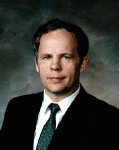 Anatoly
Solovyev, Mir 19 Crew Member
Anatoly
Solovyev, Mir 19 Crew Member
NAME: Anatoly Yakovlevich Solovyev Pilot-Cosmonaut, Colonel. Resides in Star City.
PERSONAL DATA: Born January 16, 1948, in Riga. Parents: Yakov Mikhailovich Solovyev, father, deceased in 1980. Antonia Pavlovna Soloveva, mother, resides in Riga. Married to Natalya Vasilyevna Solovyeva. Two sons, Gennady in 1975, and Illya in 1980.
EDUCATION: Graduated from the Lenin Komsomol Chernigov Higher Military Aviation School in 1972.
SPECIAL HONORS: Awarded the Order of Lenin and the "Gold Star" medal, the Order of the October Revolution, the Order of the Friendship of Peoples, and six Armed Forces medals.
EXPERIENCE: Anatoly Yakovlevich Solovyev served from 1972 to 1976 as a senior pilot and group commander in the Far Eastern Military District. Since August 1976, he has been a student-cosmonaut at the Yuri A. Gagarin Cosmonaut Training Center. In January 1979, he completed general space training. He is a test pilot third class and a test cosmonaut. From 1979 to 1984, he underwent training for a flight aboard the Soyuz-T transport vehicle and the Salyut-7 and Mir orbital stations as part of a group. In 1981, he was made part of a stand-by crew as a commander of a primary expedition. In 1987, he was the commander of a back-up Soviet-Sylian crew for an expedition that visited the Mir Station.
His first flight in 1988, lasted 9 days and was performed as part of an international Soviet-Bulgalian crew comprised of A.Y. Solovyev, B.P. Savinykh. and A. Aleksandrov, of Bulgaria. From February 11 to August 9, 1990, Colonel Solovyev accomplished a long-duration (179-day) flight aboard the Mir. At present, he is the commander of the back-up Russian crew of the Mir-18 expedition on the Soyuz-TM-21 spacecraft as part of the Mir-Shuttle program.
_______________________________________________________________
| Gibson | Precourt
| Baker | Dunbar | Harbaugh
|
| Solovyev | Budarin |
Thagard | Dezhurov | Strekalov
|
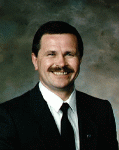 Nikolai
Budarin, Mir 19 Crew Member
Nikolai
Budarin, Mir 19 Crew Member
NAME: Nikolai Mikhailovich Budarin Test Cosmonaut of the RSC ENERGIA.
PERSONAL DATA: Born April 29, 1953, in Kirya, Chuvashia (Russia). Married to Marina Lvovna Budarina (nee Sidorenko). There are two sons in the family, Dmitry and Vladislav. His hobbies include fishing, skiing, picking mushrooms. His father, Mikhail Romanovich Budarin, died in 1984. His mother, Alexandra Mikhailovna Budarina, died in 1986.
EDUCATION: Graduated from the S.Ordzhonikidze Moscow Aviation Institute in 1979 with a mechanical engineering diploma.
SPECIAL HONORS: Awarded the titles of Hero of Russia, and a Pilot-Cosmonaut of the Russian Federation.
EXPERIENCE: Since 1976 Budarin has occupied the positions of engineer and leading engineer at the RSC ENERGIA. In February 1989 he was enrolled in the ENERGIA cosmonaut detachment as a candidate test cosmonaut.
From September 1989 to January 1991, he underwent a complete basic space training course at the Gagarin Cosmonaut Training Center and passed a State examination. Budarin is qualified as a Test Cosmonaut.
From February 1991 to December 1993, he took an advanced training course for the Soyuz-TM transport vehicle and the Mir Station flight.
From June 27 to September 11, 1995, Budarin participated in a space mission as a board engineer of the 19th long-term expedition launched by the Space Shuttle and landed by the Soyuz TM-21 transport vehicle.
From January 28 to August 25, 1998, he participated in a space mission as a board engineer of the 25th long-term expedition aboard the Mir Orbital Station.
_______________________________________________________________
| Gibson | Precourt
| Baker | Dunbar | Harbaugh
|
| Solovyev | Budarin |
Thagard | Dezhurov | Strekalov
|
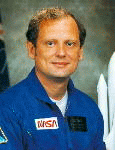 Norman
E. Thagard, NASA-1 Mir Resident
Norman
E. Thagard, NASA-1 Mir Resident
NAME: Norman E. Thagard (M.D.) NASA Astronaut
PERSONAL DATA: Born July 3, 1943, in Marianna, Florida, but considers Jacksonville, Florida, to be his hometown. Married to the former Rex Kirby Johnson of South Ponte Vedra Beach, Florida. They have three sons. During his free time, he enjoys classical music, and electronic design. Dr. Thagard has published articles on digital and analog electronic design. His father, Mr. James E. Thagard, is deceased; his mother, Mrs. Mary F. Nicholson, is a resident of St. Peterburg, Florida. Her mother, Mrs. Rex Johnson, resides in Tallahassee, Florida.
EDUCATION: Graduated from Paxon Senior High School, Jacksonville, Florida, in 1961; attended Florida State University where he received bachelor and master of science degrees in engineering science in 1965 and 1966, respectively, and subsequently performed pre-med course work; received a doctor of medicine degree from the University of Texas Southwestern Medical School in 1977.
ORGANIZATIONS: Member, American Institute of Aeronautics and Astronautics, Aerospace Medical Association, and Phi Kappa Phi.
SPECIAL HONORS: Awarded 11 Air Medals, the Navy Commendation Medal with Combat "V", the Marine Corps "E" Award, the Vietnam Service Medal, and the Vietnamese Cross of Gallantry with Palm.
EXPERIENCE: Dr. Thagard held a number of research and teaching posts while completing the academic requirements for various earned degrees.
In September 1966, he entered active duty with the United States Marine Corps Reserve. He achieved the rank of Captain in 1967, was designated a naval aviator in 1968, and was subsequently assigned to duty flying F-4s with VMFA-333 at Marine Corps Air Station, Beaufort, South Carolina. He flew 163 combat missions in Vietnam while assigned to VMFA-115 from January 1969 to 1970. He returned to the United States and an assignment as aviation weapons division officer with VMFA-251 at the Marine Corps Air Station, Beaufort, South Carolina.
Thagard resumed his academic studies in 1971, pursuing additional studies in electrical engineering, and a degree in medicine; prior to coming to NASA, he was interning in the Department of Internal Medicine at the Medical University of South Carolina. He is a licensed physician.
He is a pilot and has logged over 2,200 hours flying time--the majority in jet aircraft.
NASA EXPERIENCE: Dr. Thagard was selected as an astronaut candidate by NASA in January 1978. In August 1979, he completed a one-year training and evaluation period, making him eligible for assignment as a mission specialist on future Space Shuttle flights. A veteran of five space flights, he has logged over 140 days in space. He was a mission specialist on on STS-7 in 1983, STS 51-B in 1985, STS-30 in 1989, was the payload commander on STS-42 in 1992, and was the cosmonaut/researcher on the Russian Mir-18 mission in 1995.
Dr. Thagard first flew on the crew of STS-7, which launched from Kennedy Space Center, Florida, on June 8, 1983. This was the second flight for the Orbiter Challenger and the first mission with a crew of five persons. During the mission, the STS-7 crew deployed satellites for Canada (ANIK C-2) and Indonesia (PALAPA B-1); operated the Canadian-built Remote Manipulator System (RMS) to perform the first deployment and retrieval exercise with the Shuttle Pallet Satellite (SPAS-01); conducted the first formation flying of the Orbiter with a free-flying satellite (SPAS-01); carried and operated the first U.S./German cooperative materials science payload (OSTA-2); and operated the Continuous Flow Electrophoresis System (CFES) and the Monodisperse Latex Reactor (MLR) experiments, in addition to activating seven "Getaway Specials."
During the flight Dr. Thagard conducted various medical tests and collected data on physiological changes associated with astronaut adaptation to space. He also retrieved the rotating SPAS-01 using the RMS. Mission duration was 147 hours before landing at Edwards Air Force Base, California, on June 24, 1983.
Dr. Thagard then flew on STS 51-B, the Spacelab-3 science mission, which launched from Kennedy Space Center, Florida, on April 29, 1985, aboard the Challenger. He assisted the commander and pilot on ascent and entry. Mission duration was 168 hours. Duties on orbit included satellite deployment operation with the NUSAT satellite as well as animal care for the 24 rats and two squirrel monkeys contained in the Research Animal Holding Facility (RAHF). Other duties were operation of the Geophysical Fluid Flow Cell (GFFC), Urinary Monitoring System (UMS), and the Ionization States of Solar and Galactic Cosmic Ray Heavy Nuclei (IONS) experiment. After 110 orbits of the Earth, Challenger landed at Edwards Air Force Base, California, on May 6, 1985.
He next served on the crew of STS-30, which launched from Kennedy Space Center, Florida, on May 4, 1989, aboard the Orbiter Atlantis. During this four-day mission, crew members successfully deployed the Magellan Venus-exploration spacecraft, the first U.S. planetary science mission launched since 1978, and the first planetary probe to be deployed from the Shuttle. Magellan is scheduled to arrive at Venus in mid-1990 and will map the entire surface of Venus for the first time, using specialized radar instruments. In addition, crew members also worked on secondary payloads involving fluid research in general, chemistry and electrical storm studies. Mission duration was 97 hours. Following 64 orbits of the Earth, the STS-30 mission concluded with a landing at Edwards Air Force Base, California, on May 8, 1989.
Dr. Thagard served as payload commander on STS-42, aboard the Shuttle Discovery, which lifted off from the Kennedy Space Center, Florida, on January 22, 1992. Fifty five major experiments conducted in the International Microgravity Laboratory-1 module were provided by investigators from eleven countries, and represented a broad spectrum of scientific disciplines. During 128 orbits of the Earth, the STS-42 crew accomplished the mission's primary objective of investigating the effects of microgravity on materials processing and life sciences. In this unique laboratory in space, crew members worked around-the-clock in two shifts. Experiments investigated the microgravity effects on the growth of protein and semiconductor crystals. Biological experiments on the effects of zero gravity on plants, tissues, bacteria, insects and human vestibular response were also conducted. This eight-day mission culminated in a landing at Edwards Air Force Base, California, on January 30, 1992.
Most recently, Dr. Thagard was the cosmonaut/researcher for the Russian Mir-18 mission. Twenty eight experiments were conducted in the course of the 115 day flight. Liftoff was from the Baikonur Cosmodrome in Kazakstan on March 14, 1995. The mission culminated in a landing at the Kennedy Space Center in the Space Shuttle Atlantis on July 7, 1995.
With the completion of his fifth mission, Dr. Thagard has logged over 140 days in space.
_______________________________________________________________
| Gibson | Precourt
| Baker | Dunbar | Harbaugh
|
| Solovyev | Budarin |
Thagard | Dezhurov | Strekalov
|
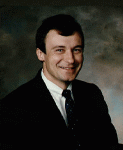 Vladimir
Dezhurov, Mir-18
Vladimir
Dezhurov, Mir-18
NAME: Vladimir Nikolaevich Dezhurov Lieutenant Colonel, test cosmonaut. Resides in Star City
PERSONAL DATA: Born June 30, 1962, Yavas settlement, Zubovo-Polyansk district, Mordovia, Russia. Married to Elena Valentinovna Dezhurova (nee Suprina). Two daughters. Nikolai Serafimovich Dezhurov, father, and Anna Vasilevna Dezhurova, mother, reside in Yavas settlement, Zubovo-Polyansk district, Mordovia, Russia
EDUCATION: Graduated from the S.I. Gritsevits Kharkov Higher Military Aviation School in 1983 with a pilot-engineer's diploma.
SPECIAL HONORS: Awarded three Armed Forces medals.
EXPERIENCE: After graduating from the aviation military school in 1983, he served as a pilot and senior pilot in the Air Force.
In 1987, he was assigned to the Cosmonaut Training Center. From December 1987 to June 1989, he underwent a course of general space training. Since September 1989, he has continued training as a member of a group of test cosmonauts. Since 1991, he has been a correspondence student at the Yuri A. Gagarin Air Force Academy.
In March 1994, Dezhurov began flight training as commander of the prime crew of the Mir-18 mission. The crew launched from the Baikonur Cosmodrome in Kazakstan on March 14, 1995 aboard a Soyuz-TM-21 transport vehicle. Following a 115 day flight the mission concluded with landing at the Kennedy Space Center, Florida, aboard Space Shuttle Atlantis on July 7, 1995.
Dezhurov is assigned as back-up for the first ISS mission and is also in training for the third ISS mission.
_______________________________________________________________
| Gibson | Precourt
| Baker | Dunbar | Harbaugh
|
| Solovyev | Budarin |
Thagard | Dezhurov | Strekalov
|
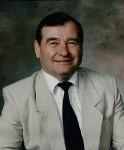 Gennady
Strekalov, Mir-18
Gennady
Strekalov, Mir-18
NAME: Gennady Mikhailovich Strekalov
PERSONAL DATA: Born October 26, 1940, Mytishohi Moscow region, Russia. Instructor-Test-Cosmonaut and Department Head at RSC Energia. Resides in Kaliningrad, Moscow Region. Parents: Mikhail Ivanovich Strekalov, Father, perished at the front in 1945. Praskovya Mikhailovna Strekalova (nee Amosova), Mother, resides in Kaliningrad, Moscow Region. Married to Lydia Anatolievna Strekalova (nee Telezhldna). Their daughter, Tatiana, was born in 1974; their daughter, Natalia, in 1975.
EDUCATION: Graduated from N.E. Bauman Moscow Higher Technical School in 1965 with an engineer's diploma.
SPECIAL HONORS: Awarded three Orders of Lenin, two Gold Star medals, and the Order of People's Friendship.
EXPERIENCE: G. M. Strekalov has worked as an engineer at RSC Energia since graduation from the N. E. Bauman Moscow Higher Technical School. He was involved in experimental investigations and testing of space technology. He holds the degree of candidate of technical sciences. He independently developed and released documentation for a series of enterprise-related products. As part of an operations group, he participated in mission control for flights of scientific research vehicles belonging to the Academy of Sciences. In January 1974, he began training as a crew member for a mission aboard the Soyuz spacecraft as a flight engineer and, in 1976, was part of the backup crew of the Soyuz of the Soyuz-22 mission.
Starting October 1978, he underwent flight training to be the flight engineer for a Soyuz expedition to visit the long-term Salyut space station. From 27 November to 10 December 1980, he successfully completed an experimental mission aboard the Soyuz-T-3 spacecraft as a research engineer as part of the crew comprised of L. D. Kizim, O. G. Malcarov, and G. M. Strekalov. During the flight, a docking of the Soyuz-T-3 spacecraft with the Salyut-6-Process-11 orbital complex was accomplished.
From June 1981 to April 1983, he underwent direct flight training to be the flight engineer of the primary expedition for a mission aboard the Soyuz-T spacecraft and the long-term Salyut-7 orbiting station. In the period from 20 - 22 April 1983, he flew aboard the Soyuz T-8 spacecraft as part of a crew comprised of V. G. Titov, G. M. Strekalov, and A. A Screbrov.
From 3 to 11 April 1984, he participated in a third space mission aboard the Salyut-7 orbital scientific-research complex as part of an international Soviet-Indian crew comprised of Yu. V. Malishev, G. M. Strekalov, and R. Sharma, of India.
In the period from 1 August to 10 December 1990, he completed a fourth space fight as flight engineer of the seventh primary expedition to the Soyuz-TM-10 station and the Mir orbital scientific-research complex as part of a crew comprised of G. M. Manakov and G. M. Strekalov.
At the completion of the fourth flight, G. M. Strekalov accumulated 153 days in space.
At present, he is undergoing flight training to be the flight engineer for a primary crew of a Russian-American space flight.